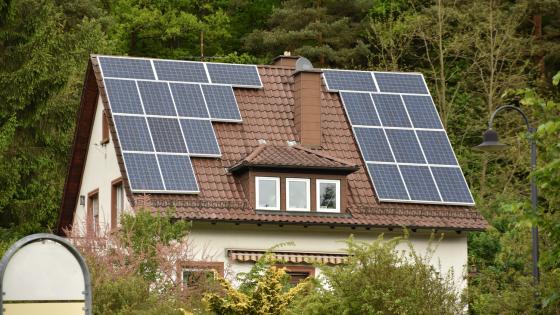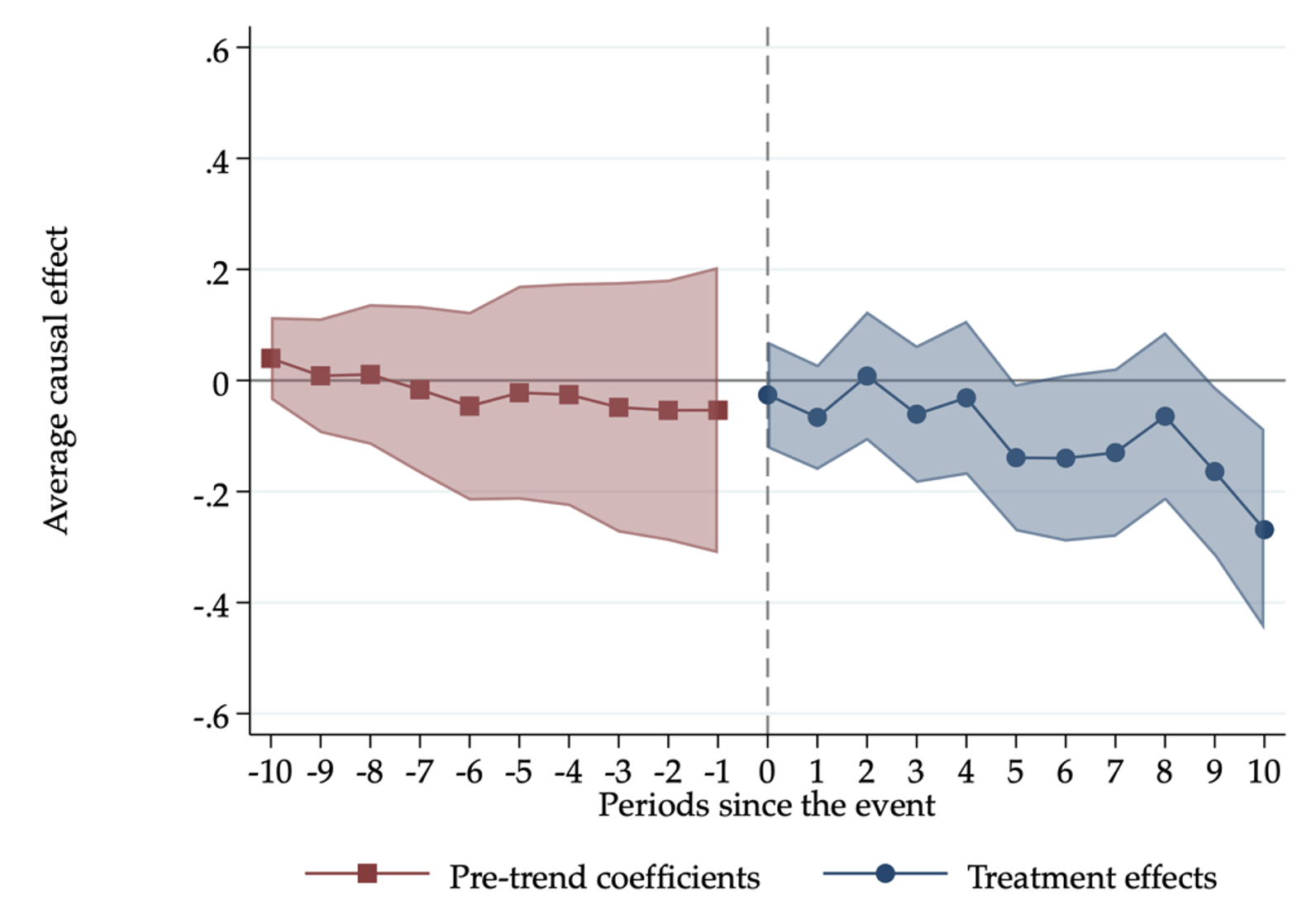The importance of transitioning to renewable energy is more salient than ever. Over the last few decades, the need to decarbonise the energy mix was generally understood as the most important reason to engage in the energy transition, with the ultimate goal of tackling climate change. Very recently, however, the war in Ukraine reminded all governments, at least in Europe, of the importance of having reliable sources of energy. Now, energy security is front and centre for virtually all European governments; some, including Germany’s, have resorted to once-abandoned coal to limit the likelihood of shortages and blackouts. Renewed interest in energy security is supporting older calls for a faster transition to renewable energy (Garicano et al. 2022).
Looking for policy options
European policymakers are currently searching (or scrambling for) ways to increase their energy production, while they also try to limit the impact of rising prices on households and firms. In the UK, the government recently introduced the Energy Price Guarantee, a measure aimed at capping electricity prices for the foreseeable future (Ilzetzki and Jain 2022). While there is still substantial uncertainty around policymaking in the UK, this measure is likely to remain in force during the winter of 2023, following a first revision by former prime minister Liz Truss. Reduced energy availability and higher energy prices have contributed substantially to recent inflation headlines in the UK and elsewhere (Castle et al. 2022). Windfall taxes on fossil fuel companies, which are benefitting from current geopolitical circumstances, have also received substantial attention in both academic and policy circles (Vaitilingam 2022). While European countries can join forces and try to purchase oil and gas from countries other than Russia (Martin and Weder di Mauro 2022), in the medium to long run the most viable solution consists in accelerating the energy transition (Arezki and Paduano 2022).
An untapped potential
This column focuses on an aspect that, in our view, has received too little attention in European policy circles: the role of non-financial barriers to renewable energy. While several member states of the EU, as well as non-members such as Switzerland, are trying to tackle some of the red tape involved with the installation of solar photovoltaics, our column puts the spotlight on an important trade-off that deserves more attention in the policy debate: namely, the trade-off between historical conservation and the adoption of solar photovoltaics.
In a recent study (Carattini et al. 2022), we show that national policies promoting the adoption of solar photovoltaics are partially counteracted by local policies defining the aesthetics of the built environment. Our study focuses on Germany, a leader in solar adoption.
The case of Germany
The study documents a significant share of German municipalities that have amended their building codes to restrict solar installations, often to preserve the historical nature of towns. These restrictions have an economically important impact on solar adoption. In particular, 15.1% of municipalities in the sample have one or more provisions in their building codes targeted at solar photovoltaics.
For this study, starting in 2019, we created a registry of municipal building codes restricting solar adoption, based on survey responses from municipal officials in Germany. The survey asked how past and current local building codes have treated the installation of solar panels. The survey also tracked information on the specific areas of municipalities covered by such restrictions, wherever coverage was not municipality wide. Regulations of solar installations in some cases include explicit bans or permit requirements. Other municipalities have more subtle provisions, such as requiring that solar installations not be visible from the street.
Combining this unique survey of municipalities and administrative data on all solar installations in Germany, we show that municipalities that introduce building codes aimed at restricting solar adoption have 8.9% fewer solar photovoltaic installations and a 10.4% smaller solar capacity than similar municipalities without such policies.
The larger effect on solar capacity shows that municipal policies lead to less adoption of solar (extensive margin) as well as smaller installations, conditional on adoption (intensive margin). Reductions in solar adoption are driven mostly by small to medium-sized installations of 5–10 kW, consistent with the policy goals of shaping the urban built environment.
In our study, we also show the dynamic effect of building codes on solar photovoltaics over time. The results approximate the average reduction in solar adoption discussed above, as shown in Figure 1 below.
Figure 1 Municipal building codes and new solar installations over time
The implementation of a solar provision in the municipal building code (period 0) reduces the rate of new photovoltaic installations in subsequent years (Figure 1). The percentage decline is displayed on the vertical axis. Prior to the introduction of a solar provision, the rate of solar installations is not distinguishable from the comparison group.
Lessons for policymakers
These findings have important policy implications: we confirm the trade-off between national (and even global) goals of climate change mitigation and energy security and the local goal of heritage preservation. These findings also raise important questions about the (cost-) effectiveness of nationwide efforts promoting the adoption of renewable energy to increase energy security and mitigate climate change. Increasing the generosity of subsidies for renewable energy, for instance, is not going to increase adoption in areas where the installation of solar photovoltaics is outright banned, and where many marginal adopters may be located.
While we are agnostic regarding the normative question about the relative importance of historical conservation versus energy security and climate change mitigation, we believe there should be more of a policy debate around the trade-off quantified in our study.
That is, as countries accelerate their transition towards a cleaner economy and seek to minimise their dependence on imports of energy from foreign sources, municipal policies may need to be re-evaluated, accounting for technological developments that will make solar photovoltaics less aesthetically invasive.
Outdated NIMBYism?
Technological development may indeed play an important role going forward. The situation that we document is typical of NIMBYism (‘Not In My Back Yard’) (Smith and Desvousges 1986, Frey and Oberholzer-Gee 1997, Levinson 1999, Fischel 2001, Feinerman et al. 2004, Krekel and Zerrahn 2017).
However, technological advances in the market for solar photovoltaics have been consistently improving the aesthetics of solar installations, making the trade-off that we examine partially obsolete. In a recent interview with the German media outlet Spiegel TV, for instance, an ordinary citizen of a historical town in Germany, Heinrich Vieweger, complained about being unable to install solar panels on his roof, because of how visible they would be. Yet, there exist solar tiles that would largely match the current aesthetic of the roof. By being more expensive – if increasingly competitive – such technologies would not necessarily lead to the same level of adoption as the absence of any regulation. Still, they would likely lead to more adoption than the counterfactual in which installations cannot be visible, thus providing a compromise between the need to protect the aesthetics of historical towns and the urgency of transitioning to a cleaner economy.
Less social spillovers?
One downside of having ‘invisible’ solar installations is that they may create fewer ‘social spillovers’ or ‘peer effects’. In a well-known US study, Bollinger and Gillingham (2012) document the presence of such social spillovers in the adoption of solar panels in California. Using data for Switzerland, Baranzini et al. (2017) find evidence pointing to stronger ‘contagion’ in the presence of more visible installations. This evidence, coupled with evidence about other socially visible pro-environmental behaviours (Carattini et al. 2019), indicates that allowing only invisible solar installations may lead to less adoption elsewhere than in a counterfactual where any installation is allowed. Yet, one would still expect more contagion than in the case where no solar installations are allowed. Indeed, visibility is expected to be only one of two drivers of social contagion, the other being word of mouth.
References
Arezki, R and S Paduano (2022), “The Energy Balancing Act between Security and Transition”, VoxEU.org, 01 July.
Baranzini, A, S Carattini and M Péclat (2017), “Social Contagion in the Adoption of Solar Photovoltaic Technology: New Evidence from Switzerland”, Working Paper 270, Grantham Research Institute on Climate Change and the Environment, London School of Economics and Political Science.
Bollinger, B and K Gillingham (2012), “Peer Effects in the Diffusion of Solar Photovoltaic Panels”, Marketing Science 31 (6): 900–912.
Carattini, S, B Figge, A Gordan and A Loeschel (2022), “Municipal Building Codes and the Adoption of Solar Photovoltaics”, Working Paper 380, Grantham Research Institute on Climate Change and the Environment, London School of Economics and Political Science.
Carattini, S, S Levin and A Tavoni (2019), “How Tangible Environmental Commitments Spur Cooperative Behaviour in Local and Global Dilemmas”, VoxEU.org, 23 October.
Castle, J, D Hendry and A Martinez (2022), “The Role of Energy in UK Inflation and Productivity”, VoxEU.org, 14 September.
Feinerman, E, I Finkelshtain and I Kan (2004), “On a Political Solution to the NIMBY Conflict”, The American Economic Review 94 (1): 369–81.
Fischel, W A (2001), “Why Are There NIMBYs?”, Land Economics 77 (1): 144–52.
Frey, B S and F Oberholzer-Gee (1997), “The Cost of Price Incentives: An Empirical Analysis of Motivation Crowding-Out”, American Economic Review 87 (4): 746–55.
Garicano, L, D Rohner and B Weder di Mauro (2022), “Increased Urgency for the Green Transition in Europe”, VoxEU.org, 23 September.
Krekel, C and A Zerrahn (2017), “Does the Presence of Wind Turbines Have Negative Externalities for People in Their Surroundings? Evidence from Well-Being Data”, Journal of Environmental Economics and Management 82: 221–38.
Levinson, A (1999), “NIMBY Taxes Matter: The Case of State Hazardous Waste Disposal Taxes”, Journal of Public Economics 74 (1): 31–51.
Martin, P and B Weder di Mauro (2022), “Winter Is Coming: Energy Policy towards Russia”, VoxEU.org, 23 July.
Smith, V K and W H Desvousges (1986), “The Value of Avoiding a Lulu: Hazardous Waste Disposal Sites”, The Review of Economics and Statistics 68 (2): 293–99.
Vaitilingam, R (2022), “Energy Costs: Views of Leading Economists on Windfall Taxes and Consumer Price Caps”, VoxEU.org, 19 September.








